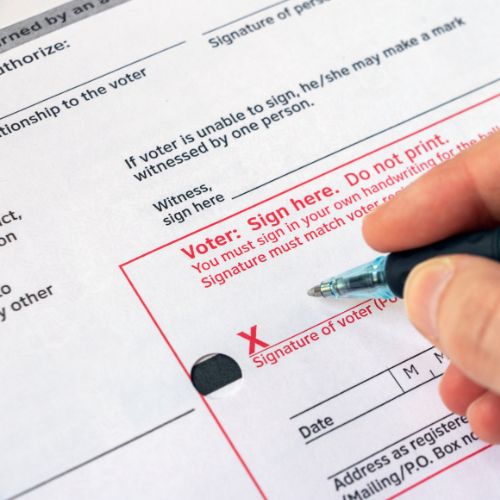
Voter Suppression Tactics: History and Modern Practices – A Step-by-Step Guide
Voter suppression is a troubling practice that undermines the democratic process by preventing or discouraging certain groups of people from voting. It has a long history in many countries, including the United States, and continues to be an issue today in various forms. In this post, we’ll explore the history of voter suppression, the tactics used in the past, and the modern methods still employed today. We’ll also provide actionable insights on how to recognize and combat these tactics.
This guide is designed to be professional, informative, and accessible to a broad audience, explaining complex concepts clearly and in an easy-to-understand manner.
What Is Voter Suppression?
Voter suppression refers to any effort, legal or illegal, that prevents or hinders eligible voters from casting their ballots. These tactics disproportionately target marginalized groups such as racial minorities, the elderly, students, and low-income individuals, denying them the ability to participate fully in the democratic process.
A Brief History of Voter Suppression
The history of voter suppression is deeply intertwined with systemic discrimination, particularly against African Americans, Native Americans, women, and other marginalized communities. Here are some notable moments in the history of voter suppression:
1. Post-Civil War Era and Reconstruction
After the Civil War, the 15th Amendment to the U.S. Constitution was passed in 1870, granting African American men the right to vote. However, many Southern states resisted this change by enacting Jim Crow laws, which included literacy tests, poll taxes, and other tactics designed to disenfranchise Black voters.
- Poll Taxes: Required individuals to pay a fee to vote, disproportionately affecting poor African Americans.
- Literacy Tests: Required voters to pass difficult reading and interpretation tests, which were often unfairly administered to Black voters.
2. Women’s Suffrage Movement
Women in the U.S. did not gain the right to vote until 1920 with the passage of the 19th Amendment. Even after its passage, voter suppression tactics were used to discourage women, particularly women of color, from voting.
3. The Civil Rights Movement and the Voting Rights Act of 1965
The Civil Rights Movement fought against segregation and voter suppression, leading to the landmark Voting Rights Act of 1965. This law banned many of the discriminatory practices used to suppress minority voters, such as literacy tests and discriminatory districting practices (gerrymandering). It also required certain states with histories of voter suppression to obtain federal approval before changing voting laws.
4. Shelby County v. Holder (2013)
In this Supreme Court case, key provisions of the Voting Rights Act were weakened. The ruling removed the requirement for states with a history of voter suppression to seek federal approval before changing their voting laws. Since then, many states have enacted new laws that some argue disproportionately affect minority and low-income voters.
Modern Voter Suppression Tactics
While the more overt and aggressive tactics of the past have largely been abolished, voter suppression persists in more subtle, but still damaging, forms. Here are some of the modern practices used to suppress voter participation:
1. Voter ID Laws
One of the most commonly discussed forms of modern voter suppression is the implementation of strict voter ID laws. These laws require voters to present specific forms of identification to vote, such as a driver’s license or passport. While advocates argue these laws prevent voter fraud, critics note that they disproportionately affect marginalized communities, including minorities, the elderly, and low-income individuals who may not have easy access to these forms of ID.
- Impact: Research shows that voter ID laws can reduce voter turnout, particularly among groups less likely to possess the required identification.
2. Voter Roll Purges
Voter roll purges involve removing individuals from voter registration lists if they haven’t voted in recent elections or if there is a question about their eligibility. While purges are intended to maintain accurate voter rolls, they often result in eligible voters being removed erroneously, and these individuals may not find out until Election Day.
- Example: In Georgia’s 2018 election, a controversial voter roll purge removed thousands of registered voters, disproportionately affecting African Americans.
3. Polling Place Closures
Closing polling places, particularly in minority and low-income communities, creates long wait times and makes it more difficult for people to vote. This tactic often disproportionately affects urban areas, where larger populations rely on fewer polling stations, causing excessive delays on Election Day.
- Impact: In some cases, voters in these communities have to wait several hours to cast their ballots, leading many to leave without voting.
4. Gerrymandering
Gerrymandering is the practice of drawing electoral district boundaries in a way that favors one party or group over another. By manipulating district lines, political parties can dilute the voting power of certain demographic groups, reducing their ability to elect representatives of their choice.
- Example: Districts can be drawn in ways that “crack” (spread) or “pack” (concentrate) minority voters to minimize their influence.
5. Disinformation Campaigns
In the digital age, disinformation campaigns have become a tool for voter suppression. False information about voting dates, polling locations, or voter eligibility can be spread online, particularly targeting vulnerable groups. These campaigns can confuse or discourage people from voting.
- Example: During the 2020 U.S. election, disinformation about mail-in voting and absentee ballots was widely circulated online, causing confusion and mistrust among voters.
6. Limits on Early Voting and Absentee Voting
Many states have reduced access to early voting and absentee voting, making it harder for individuals who cannot vote in person on Election Day to participate. These restrictions disproportionately affect working-class individuals, people with disabilities, and those living in remote areas.
How to Recognize and Combat Voter Suppression
Voter suppression can be subtle, but understanding these tactics can help individuals protect their voting rights. Here are some practical steps to recognize and combat voter suppression:
1. Know Your Voting Rights
Familiarize yourself with the voting laws in your state or country. Many jurisdictions offer resources to help voters understand their rights, such as what identification is required, the hours polling places are open, and how to vote absentee.
- Tip: If you’re unsure about your voting rights, contact local election officials or voter protection organizations.
2. Check Your Voter Registration
Regularly check your voter registration status, especially if you haven’t voted in a while. If you’ve been removed from the voter rolls, re-register before the deadline.
- Tip: Many states offer online voter registration check tools to help you confirm your status.
3. Be Prepared on Election Day
Plan ahead for Election Day by knowing your polling location, the hours it’s open, and any requirements for voting. Consider voting early or by mail if possible to avoid long lines and potential issues on Election Day.
- Tip: Bring all necessary identification and documentation with you, and be prepared for potential delays at polling places.
4. Report Voter Suppression
If you witness or experience voter suppression tactics, report them to the appropriate authorities or nonpartisan organizations that work to protect voting rights, such as the American Civil Liberties Union (ACLU) or the Election Protection Coalition.
- Tip: Keep track of irregularities you notice, including long wait times, lack of polling stations, or misleading information.






